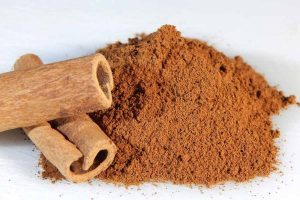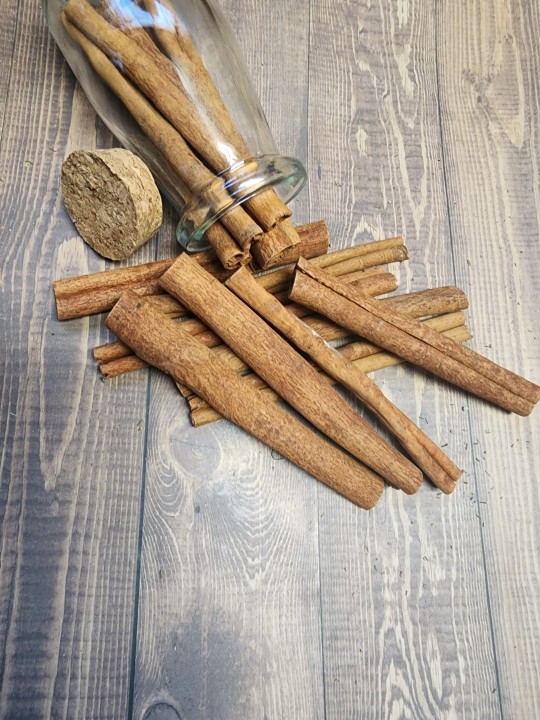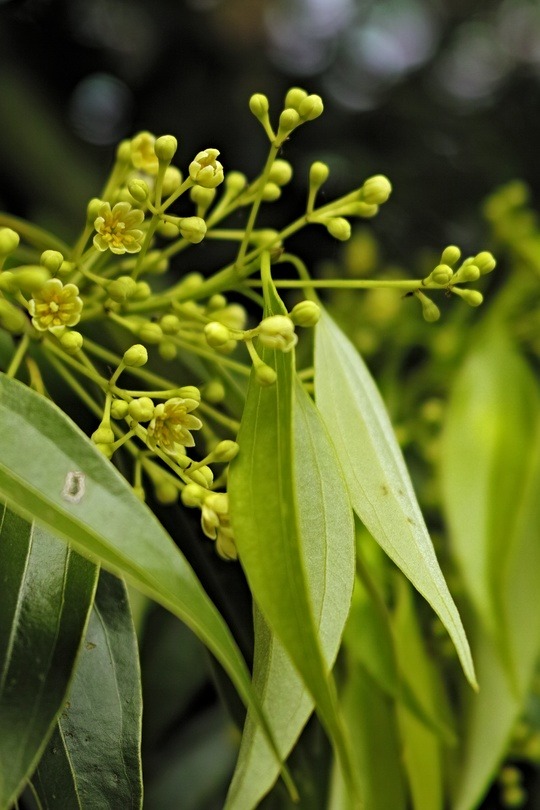#Lauraceae
Text

Aguacates
Imagen: rawpixel
0 notes
Text
The Marvelous Avocado
Avocados, with their buttery texture, rich flavor, and incredible health benefits, have captured the hearts and taste buds of people around the world. Beloved for their versatility and nutritional value, avocados have become a staple ingredient in many dishes and a symbol of healthy eating. In this comprehensive guide, we delve into the world of avocados, exploring their origins, nutritional…

View On WordPress
#and B-6#Antioxidants#folate#Lauraceae#Nutrient Absorption#Nutritional Powerhouse#Preserving Avocados#Ripening Avocados#Storing Avocados#vitamin B6#vitamin E#vitamin k#vitamins K
0 notes
Text
Tarçın: Mucizeler Dünyası!

Tarçın, Lauraceae familyasından cinnamomum cinsinde yer alan bir baharat ve tıbbi bitkidir. kabuğu kullanılarak elde edilir ve özellikle tatlı ve baharatlı yemeklerde yaygın olarak kullanılır. Hindistan, sri lanka ve endonezya gibi tropikal bölgelerde yetişir.
İlginizi Çekebilir: Zencefil Özellikleri ve Çayı, Faydaları

Read the full article
0 notes
Text

Health benefits of avocado
0 notes
Photo


THE WARREN WITCHES:
INTRODUCING. Laurel of the Lauraceae Line
how do i even begin to explain laurel? laurel is flawless. i hear her wings are insured for ten thousand dollars. i hear she does delegations for fae kingdom. her favorite movie is “mean girls.” one time, she met a witchlighter on a quest, and she told her she was pretty. one time, she punched me in the face… it was awesome. so watch out, because something wicca this way comes…
#witness! as i bravely ask the question: what if regina george was a girl kisser#charmed#charmededit#laurel lauraceae#laurellauraceaeedit#aesthetic#charmed aesthetic#ogwork#next gen#charmed next generation
15 notes
·
View notes
Text


The prehistoric Cueva Pintada (Painted Cave) located on the island of Grand Canary in the Canary Islands archipelago. The cave was discovered by accident in 1862 during agricultural digging work. When it was first found, it contained skeletons, pottery and other utensils. The paintings themselves consist of precisely delineated geometrical patterns painted in ochre, a pigment derived from minerals. Archaeologists think that, due to their regular distribution (usually in series of twelve), they could be a sort of calendar. They were created by the Canarii, the indigenous inhabitants of the island prior to the Spanish invasion in the 15th century. The Canarii (also known as the Guanche) were of North African origins, and genetic testing of their mummies found they were closely related to Moroccans, Berbers and Spaniards.
The first carbon-14 analysis made on the cave was on the wall paintings. This gave no results because the paint used carried no trace of carbon, being entirely non-organic. Some vegetal remains of a plant from the family Lauraceae were found in the mortar in the walls. These remains were dated between 1049 and 1257 BCE. Some fragments of pine wood were dated between 601 and 994 CE.
68 notes
·
View notes
Text

Cinnamon
Cinnamomum Verum
Known as: Ceylon cinnamon & sweet bark
Related plants: Cinnamon is a member of the Lauraceae or the laurels. It is a plant family that includes the true laurel and its closest relatives. This family comprises about 2850 known species in about 45 genera worldwide that can include Cinnamomum, bay, sassafras, bay laurel, litsea & cassytha.
Parts used: Inner bark
Habitat & Cultivation: This evergreen tropical tree is native to Sri Lanka, the neighbouring Malabar Coast of India, and Myanmar (Burma) and is also cultivated in South America and the West Indies. this species is found growing from the lowlands up to an altitude of 700 m. C. verum is a hardy species which tolerates a wide range of tropical soils.
Plant type: Perennial
Region: 10-12
Harvest: Give your cinnamon tree two to three years after planting to fully develop. When the bark is brown and the leaves are firm, the plant is ready for harvesting. Carefully Cut away the outer bark until you reach the yellow-orange inner bark then peel away strips of the inner bark until you reach the core of the branch or trunk. Dry the inner bark & let the peeled pieces in a single layer on a window screen or tray. They will curl as they dry until they resemble the cinnamon quills you’re used to.
Growing tips: Make sure the planting site is several feet away from other trees & at least six hours of direct sunlight on most days. Cinnamon plants prefer a rich, well-draining soil-A sandy loam will work well & don't do well in waterlogged soils, so don't plant in heavy clay or hardpan soils. They don't do well when temperatures fall below 40 degrees Fahrenheit or in very dry conditions.
Medicinal information: Cinnamomum verum has been reported to have anti-diabetic, antibacterial, antioxidant, anti-inflammatory, and anticancer effects. Cinnamon oil is also used in dental and pharmaceutical products. Cinnamon leaf oil has been found to be effective in killing mosquito larvae & in some studies the leaf oil is being proposed for use as an insect repellent.
Cautions: Cinnamon usually causes no side effects. But heavy use could irritate your mouth and lips, causing sores. The oil can be a skin irritant & therefore should not be put directly on your skin.
Magickal Properties
Gender: Masculine
Planet: Sun
Element: Fire
Deities: Aesclepius, Aphrodite, Bast, Helios, Mercury, Oshun, Ra & Venus
Magickal uses:
• Add to a spell to speed up action &success
• Burn as an incense to stimulate spiritual powers, increase, psychic ability & awareness
• Wear as an amulet to attract passion into your life
• Hang the sticks or a cinnamon broom above your front door to keep negative energies away
• Keep a cinnamon stick in your wallet to attract financial prosperity
• Mix with your coffee for an easy prosperity spell
• Rub the oil on ritual tools to cleanse them(but please use gloves, cinnamon oil is very strong)
• Substitute the sticks for bones while attempting divination via osteomancy
• Use in a simmer pot for money, cleansing & prosperity spells
• Burn the bark or incense to increase male libido or empower sex magick
• Along side a green candle & basil, cinnamon helps makes a quick & easy money spell
#herb of the week#magical herbs#cinnamon#witchblr#wiccablr#paganblr#witch community#witches of tumblr#tumblr witch#witch tumblr#grimoire#spellbook#spellwork#witch tips#baby witch#beginner witch#herbalism#green witchery#green witch#witchcraft#traditional witchcraft#witchcore#GreenWitchcrafts#book of shadows#spells#witchy things#witch#correspondence#pagans of tumblr#witches
161 notes
·
View notes
Photo



Prunus laurocerasus (English laurel, Cherry laurel) and Bombus melanopygus (Orange-tailed bumblebee)
Confusingly, the English laurel isn’t a member of the laurel family (Lauraceae) but, rather, belongs to the cherry family (Prunus). Some people treat them like topiaries and prune them flat on the top. This produces such a dense forest of flowers that it’s a wonder that local pollinators (like this orange-tailed bumblebee) can keep up with the demand. Not only is this plant not a laurel but it’s not from England either being native to the area of the Black Sea.
#flowers#photographers on tumblr#English laurel#bumblebee#spring flowers#fleurs#flores#fiori#blumen#bloemen#Vancouver
165 notes
·
View notes
Text
Fascinating flora #4
Cinnamon
A member of the lauraceae family, this plant is related to other laurels, such as camphor, bay laurel, avocado, and sassafras.
Cinnamon is the inner bark of the tree by the same name, and has been coveted throughout history for its flavor and smell.
Originally discovered in what is now Sri Lanka, Ceylon cinnamon and other varieties of the plant now grow along most of South Asia. The spice has a long history of trade and regulation, and was once more valuable than gold in Egypt. It’s very hard to grow in North America and Europe.
Cinnamon has a few valuable health benefits, such as reducing inclination and cholesterol, and has some anti microbial properties. There’s some research to support a metabolical boost effect, though more research must be done as to the efficacy of that.
It’s used in many household dishes, from curries to baked goods to cold desserts.
In witchcraft, the oil of cinnamon is helpful for boosting connectedness and wisdom. Related to fire, this spice is good for confidence, awareness, manifestation, and motivation
It’s place as a valued spice makes it a strong reagent for anything involving abundance, luck, success, and fortune. It’s frequently paired with citrine, pyrite, green aventurine, rice or other grains, and citrus, for spells to attract money or luck.
Cinnamon also has some uses in spells involving passion and love.
Sources:
11 notes
·
View notes
Photo

肉桂[Nikkei]
Cinnamomum sieboldii
It is often called ニッキ[Nikki] or ニッケ[Nikke]. The root has aromatic flavor and is used in folk medicine, spices and confectionery.
https://en.wikipedia.org/wiki/Yatsuhashi
Commonly known as Cinnamon is Cinnamomum cassia, which is called 支那肉桂[Shinanikkei](Chinese cinnamon.)
Cinnamon trees are the Lauraceae family, and they grow very large.
9 notes
·
View notes
Photo

Ellis Rowan “Endiandra insignis (F.M.Bailey) F.M.Bailey, family Lauraceae“ ca. 1887 watercolour 54.7 x 38 cm.
34 notes
·
View notes
Text
cinnamon tree
The evergreen cinnamon tree, sometimes referred to as Cinnamomum verum or Cinnamomum zeylanicum, is a member of the Lauraceae family. It is commonly planted throughout other tropical areas and is indigenous to Sri Lanka and southern India.
5 notes
·
View notes
Text
Pacing around and rattling the bars of my cage thinking about how both bay laurel and camphor trees (both of the family lauraceae) can be quite good hosts for phytopthora ramorum without being harmed themselves but avocado (also of the family lauraceae) is routinely blighted by phytopthora cinnamomi... What does it MEAN why do some family members live peacefully with one kind of phytopthora and others get another kind and just like straight die???
#guess I found my rabbithole of the day#botanical fuckery#listen... LISTEN i have so much beef with phytopthora as a whole but like#makes no damn sense compels me tho.jpeg
2 notes
·
View notes
Photo








I only exist as an internet phantom these days so I observed Botany 2022 by trying to "collect" as many plant families as possible in my bubble tea and other drink selection during the online conference.
Day 1: Fuku Tea blueberry black tea with lychee jellies and a blue butterfly pea lemonade. Families: Teaceae (tea family), Poaceae (grass family, sugar), Ericaceae (heath family, blueberry) Sapindaceae (soapberry family, lychee) Rutaceae (citrus family, lemon) Fabaceae (bean family, blue butterfly pea)
Day 2: Donkey Coffee vanilla chai latte. Families: Orchidaceae (orchid family, vanilla), Zingiberaceae (ginger family, ginger, cardamom), Apiaceae (carrot family, anise), Myrtaceae (myrtle family, clove), Lauraceae (bay family, cinnamon).
Tsaocha melon mojito with mango boba, pineapple passion green tea. Familes: Oleaceae (olive family, jasmine), Passifloraceae (passionflower), Bromeliaceae (bromeliad family, pineapple) Anacardiaceae (sumac/poison ivy family, mango) Cucurbitaceae (squash family, melon), Lamiaceae (mint family, mint).
Day 3: Tsaocha purple potato milk tea and Blue Monkey violet macaron black tea. Dioscoraceae (yam family, purple yam), Euphorbiaceae (euphorbia family, boba), Malvaceae (mallow family, hibiscus), Rosaceae (rose family, almond, apple), Violaceae (violet family, blue violets)
Fuku Tea kiwi green tea w strawberry popping boba. New families: Actinidiaceae (kiwi family, kiwi)
Day 4: Fuku tea dragonfruit lemonade, taro milk tea w coconut jelly, chocolate orange pu-erh, Blue Monkey black currant black tea, a random throat comfort tea from my closet. Families: Asteraceae (aster family, cornflower), Grossulariaceae (gooseberry family, currants), Ulmaceae (elm family, slippery elm), Scrophulariaceae (figwort family, mullein) Piperaceae (pepper family, black pepper)
Some families I had on the planning spreadsheet but didn't get to for lack of time include Lythraceae (pomegranate), Rhamnaceae (jujube), Vitaceae (grape), Pedaliceae (sesame)
12 notes
·
View notes
Text
Botany, Breeds and Varieties part 1

The avocado tree is an evergreen tree with an average height of 6 meters, but which can achieve up to 20 meters depending on the genotype .
The trunk of the tree is cylindrical, wavy, longitudinally grooved in the dark gray, with light and fragile wood, easy to break with the wind, and still has a low commercial value. The crown of the tree is dense, erect or distribute symmetrically. The leaves are alternate, petiolate with petioles from 15mm to 5 cm in length. The color of the leaves is reddish or beige when young and older green, leathery, 10-30 cm long and 3-10 cm wide, oval, lanceolate or elliptical, with an acuminate tip (Maranca, 1980; Koller, 1992).
The inflorescences of the avocado are axillary, appearing at the base of young shoots and grouped at the terminal part of the branches, acquiring the appearance of terminal panicles. The flowers are small, 5-15 mm in diameter, yellowish-green in color, with a characteristic odor and a short pedicel. The calyx of the flowers is yellowish green, with six sepals. The the corolla is absent. The stamens are 12 in number, divided into four groups of three, with nine functional staminoids and three of asymmetric length, with the longest internal stamens (Maranca, 1980).
The ovary is unicarpellar and uniovular, with a stigma and a disc-shaped stylus. The fruit is a fleshy monocarp berry formed by membranous epicarp(crust), leathery, mesocarp (pulp) with a butter
consistency and endocarp (structure surrounding the seed). The form can varies between oval, pyriform or rounded and the external color may vary between green, brown or purple. The seed, also known as the "core", presents itself one in number per fruit, large in size, ovoid in shape, brown in
colored and protected by the endocarp (Teixeira et al., 1992).
Systematically the avocado belongs to the botanical family of the Lauraceae, be included in the genus Persea, which covers about 150 species, with a center of origin in Mexico and Central America. This is the reason why the vast majority of species in the genus are found in tropical America and temperate America and only four described species are found in the Amazon (Montenegro, 1951; Maranca, 1980; Koller, 1992).
The genus Persea can be divided into two subgenera: Perseae Oreodaphne (Koller, 1992), however, Persea americana., which is the species considered the most important due to its value in fruit growing. He is found in the subgenus Persea (Canto, 1978; Koller, 1992) and Persea drymifolia, which for some time was considered a species, and gave birth to the avocado breed known as the Mexicana, currently adapted as a botanical variety of P. americana.
In addition to the Mexican breed, as mentioned above, the avocado the varieties can be classified agronomically into two other breeds, totaling three distinct races: Mexicana, Guatelmalteca and Antilhana, which botanically correspond to the botanical varieties of the Persea americana-var mill.
Drymifolia, Mill in Persea americana, var. Mill Americana and Persea nubigena. var. guatemalan.
0 notes


